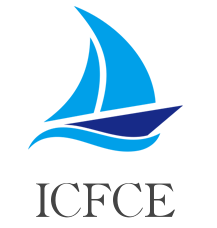
Speaker
|
|
Associate Professor Jaan H. Pu, University of Bradford, UK |
Biography: Dr Jaan H. Pu have been appointed as an Associate Professor in Civil Engineering at University of Bradford, UK since 2017. His research interests and publications cover a range of interdisciplinary studies between civil and environmental engineering topics, including hydrodynamics, hydrological and environmental management areas. Up to date, he has 109 publications (8 edited/authored books, 4 book chapters, 82 peer-reviewed SCI/E-SCI indexed journal articles, and 15 conference publications), as a result from his international and national collaborated research. Among his journal publications, four of them have been the top-cited paper in their respective journals; two of them have been the top-cited or viewed paper; two of them have been awarded with the Editor-choice article prize; and another one has won a prestige Best Institution Publication award at University of Bradford. He has also been appointed as Associate Editor for Frontiers in Environmental Science (Impact Factor: 3.3), and for Frontiers in Built Environment (Impact Factor: 2.2); and Member of Editorial Board for Journal of Groundwater Science and Engineering, and for Fluid Dynamics and Materials Processing. He has been the Lead Guest-Editor for 7 special issues for various journals (in Frontiers in Environmental Science; Fluid Dynamics and Materials Processing; and Fluids). His research conducted currently and within the past decade during his international academia career was funded by the Kazakhstan’s, China’s and UK’s research authorities (totalled to a value of £1.5m).
Speech title: Experimental Investigation of Flow Turbulent Structures and Corrosive Materials Induced by Bridge Piers Group
Abstract: This keynote speech explores our experimental experience in the turbulent flow structures and burst events analysis via a flow experiment along three bridge piers within an open channel environment. Utilising a controlled laboratory flume equipped with an Acoustic Doppler Velocimetry (ADV) system, the research captures high-resolution, three-dimensional velocity data to explore the influence of bridge piers on flow behaviour, and vortex formation. Three piers were installed to represent real-world hydraulic interactions, where the resulting velocity profiles, Reynolds shear stress distributions, and quadrant (bursting) analyses were examined in detail. Besides, a novel Electrochemical Impedance Spectroscopy (EIS) system has also been utilised into this research to measure the corrosive materials emitted and transported from bridge pier under hydrodynamic forces.
The findings reveal significant flow modifications caused by the presence of piers, including reverse flow regions, enhanced downward velocities, and increased turbulence intensity, particularly in the wake of the first pier. Notably, quadrant analysis identified dominant ejection and sweep events near the surface and the bed, signifying their critical role in turbulent energy production and flow instability. Also, the correlation of flow turbulence and corrosive materials emission and transport has been observed and validated. These turbulent structures and corrosive materials advance study contribute to hydraulic design and infrastructure resilience of bridges and water-based structures.
|
|
Assistant Professor Abolghasem Kazemi. Shiraz University of Technology, Iran |
Biography: Dr. Abolghasem Kazemi is an Assistant Professor in the Department of Chemical, Petroleum and Gas Engineering at Shiraz University of Technology. Dr. Kazemi has also served one year as a postdoctoral researcher in the National University of Singapore and two years as Marie Skłodowska-Curie postdoctoral fellow of IMDEA Energy and University Rey Juan Carlos in Madrid while developing a sustainabily assessment framework of chemical processes which lead to the development of the Process Analyzer Software (PROAN®). Dr. Kazemi's research mostly concerns the chemical process intensification with a view to achieve efficiency and sustainability for the industry. His research helps minimize energy consumption through innovative process design and optimizations. This work involves integration of life cycle assessments (LCA) and process engineering concepts and tools to evaluate and optimize the environmental impacts of chemical processes to achieve greener technologies. Dr. Kazemi also develops the innovative software solutions for chemical engineers that allow them to monitor and optimize the performance of production plants in real-time. This multidisciplinary method helps in developing more sustainable, cost-effective, and environmentally beneficial chemical manufacturing systems.
Speech title: More Sustainable Chemical and Petrochemical Production by Systematic Minimization of Environmental Metrics Using Evolutionary Algorithms
Abstract: There is increasing pressure on the chemical and petrochemical sectors to lessen their environmental effect without sacrificing their financial sustainability. By integrating evolutionary algorithms with process simulation models and extensive environmental databases, this keynote examines a novel framework for attaining more sustainable production through the methodical minimization of environmental indicators.
In order to maximize important performance metrics like greenhouse gas emissions, water consumption, and ecological toxicity, we offer a methodology that incorporates multi-objective evolutionary algorithms into chemical/petrochemical/refinery process models. A comprehensive assessment of sustainability is made possible by the quantification of these indicators using characterization factors from environmental footprint databases. In this method, evolutionary algorithms run through iterative exploration processes to determine the trade-offs between environmental concerns and operational objectives. Based on their results, decisions can be made in process design, retrofit, and operation. The adaptability and efficiency of this integrated approach have been demonstrated in case studies from the petrochemical industry, highlighting methanol plants where progress in sustainability indicators was achieved without compromising economic performance.
This presentation illustrates how modern optimization methods coupled with open environmental assessment tools may speed up the shift toward greener chemical manufacturing systems, a vital step toward achieving global climate and sustainability ambitions.
|
|
Dr. Anusuya Pal, JSPS Postdoctoral Research Fellow, The University of Tokyo, Japan |
Biography: Dr. Anusuya Pal is a physicist and JSPS postdoctoral fellow at the University of Tokyo (UTokyo), where she investigates fluid dynamics and pattern formation in drying bio-colloids. Her research integrates soft matter physics, image-based quantification, and interpretable AI to uncover how micro- and macroscale flow behaviors govern complex deposition patterns. This work has direct implications for biomedical diagnostics, particularly in developing low-cost, non-invasive disease screening tools. Dr. Pal’s academic path spans India, the USA, and the UK—earning her Ph.D. from Worcester Polytechnic Institute (WPI) and completing postdoctoral research at the University of Warwick. Her projects bridge fluid mechanics, interfacial science, and AI, with recent studies addressing evaporative instabilities, compositional phase separation, and particle-flow coupling in biological and biomimetic droplets. Beyond her research, Dr. Pal is deeply committed to mentoring and inclusion in STEM. She holds mentoring and teaching roles at MIT and WPI, where she has encouraged underrepresented groups in the sciences. She aims to contribute to cross-disciplinary discussions on complex fluids and chemical systems and to share her insights on exploiting physics and data-driven approaches in bio-fluid engineering.
Speech title: Exploring Hierarchical Drying Droplet Patterns in Protein and Blood-Based Fluids.
Abstract: Understanding how multicomponent bio-colloidal fluids behave during evaporation is fundamental to both fluid dynamics and soft matter physics. In this keynote, I will present a comparative and hierarchical study of pattern formation in drying droplets, ranging from simple protein solutions to complex biological fluids, such as whole blood. I will discuss how the internal molecular interactions, concentration gradients, and interfacial dynamics govern the transition from homogeneous to heterogeneous pattern formation. It examines the drying evolution of lysozyme and bovine serum albumin (BSA) in deionized water, revealing how concentration-dependent transitions influence the mode of evaporation, crack morphology, and the final crack patterns. When we go from one-component to multi-component systems, we observe a concentration-driven phase transition during drying, resulting in striking morphological differences, self-assembled ring-like structures, and changes in viscoelastic properties. Together, these studies illustrate a physicochemical hierarchy, demonstrating how simple systems evolve into complex ones and providing new insight into fluid mechanics, phase transitions, and self-assembly in soft matter systems. These findings have broad implications, from material design to diagnostic tools, emphasizing the critical role of drying dynamics in revealing the hidden architecture of biofluids.
Copyright © 2021 - 2025 ICFCE All rights reserved. 2025 5th International Conference on Fluid and Chemical Engineering



